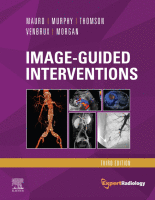Physical Address
304 North Cardinal St.
Dorchester Center, MA 02124

Chronic cerebral ischemia may be the result of extracranial carotid or vertebral stenosis and/or intracranial arterial stenosis. This chapter focuses on intracranial arterial stenosis as well as extracranial vertebral artery stenosis. For an in-depth discussion of extracranial carotid stenosis, please…

Stroke is the leading cause of disability and the third leading cause of death in the United States, with a prevalence of 2.7%. The landscape of acute stroke treatment has changed dramatically in the last 5 years. Since the publication…

Stroke represents the fifth leading cause of death in the United States, with an incidence of 1.5 deaths per thousand people. Of the more than half-million strokes occurring annually, occlusive disease of the extracranial circulation is responsible for approximately 30%.…

The role of interventional neuroradiology has expanded in the past decades as the safety of cerebral angiogram has improved. Not only is the use of diagnostic angiography increasing, the role of intervention in neurologic injury has increased dramatically as well.…

You’re Reading a Preview Become a Clinical Tree membership for Full access and enjoy Unlimited articles Become membership If you are a member. Log in here

Spinal digital subtraction angiography (SpDSA) is the gold standard imaging modality for evaluating vascular anomalies of the spine and spinal cord. Endovascular treatment of spinal vascular lesions was pioneered in the late 1960s shortly after the introduction of selective spinal…

Craniocervical Arteries Cerebral blood flow is provided by the paired internal carotid arteries (ICAs) and vertebral arteries (VAs). The intradural branches of the ICA supply the anterior cerebral circulation (i.e., cerebral hemispheres, including basal ganglia) and the orbit; these branches…

Acute pulmonary embolism (PE) remains a global health problem and represents a life-threatening manifestation along the spectrum of venous thromboembolism (VTE). Although the true incidence of PE is unclear, it is recognized as a significant cause of morbidity and mortality…

Pulmonary arteriovenous malformations (PAVMs) consist of varyingly sized dilated vascular channels connecting pulmonary arteries and veins directly with no intervening capillary bed. These are generally congenital and usually found in patients with hereditary hemorrhagic telangiectasia (HHT), although the PAVM is…

Massive hemoptysis, defined as expectoration of 300 mL of blood or more within a 24-hour period, is a life-threatening condition. The most common mechanism of death from massive hemoptysis is asphyxiation, not exsanguination. Asphyxiation is caused by a reduction of…